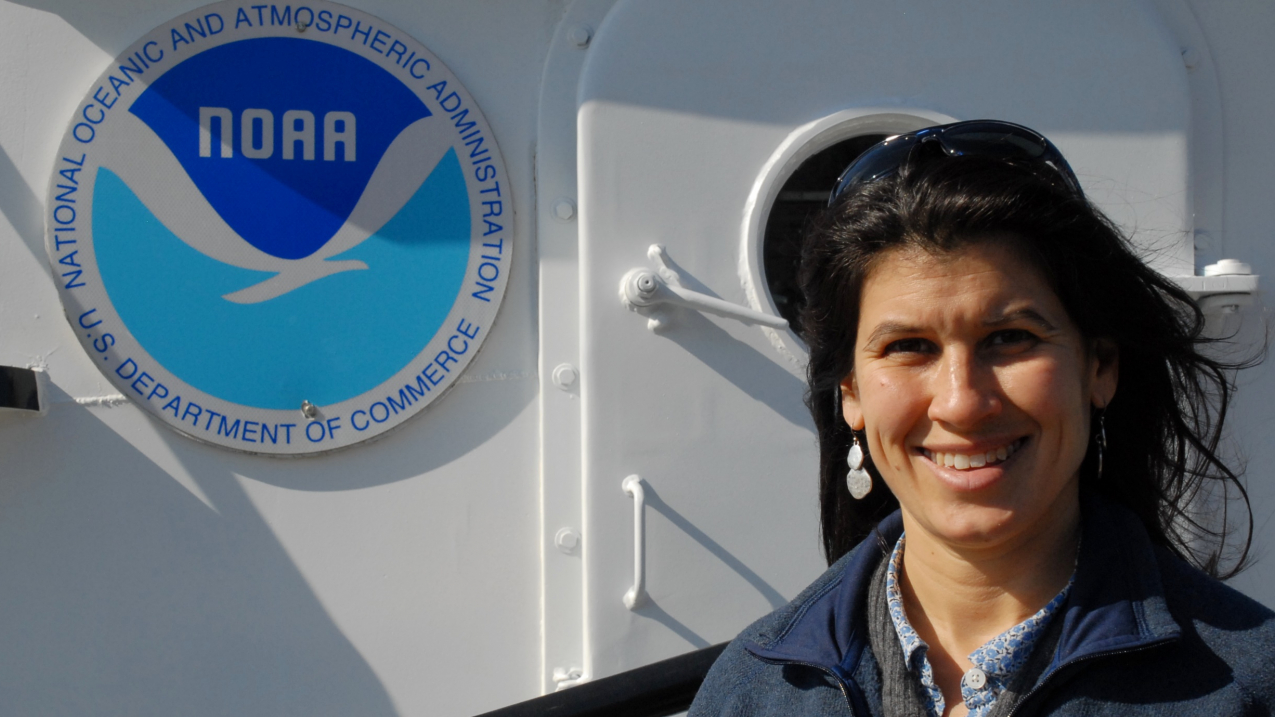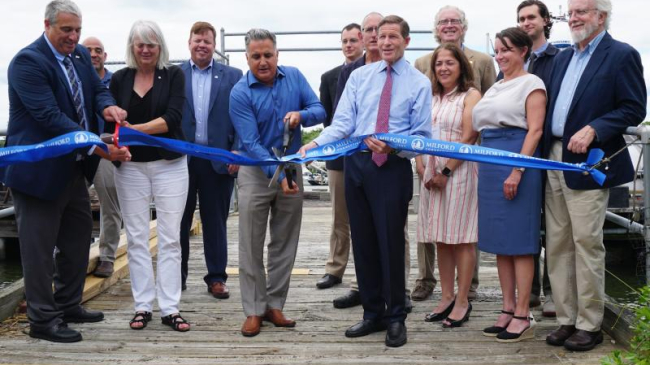Meet a fisheries stock assessment scientist

Kiersten Curti, NOAA Fisheries stock assessment scientist (Image credit: NOAA)
Kiersten Curti, a stock assessment scientist with NOAA Fisheries, tightens the snaps on her foul weather gear and puts on her gloves. She joins four other scientists, two on each side of the conveyer belt, in the wet lab on the NOAA research vessel Henry B. Bigelow, which is sailing off the New England coast.
Suddenly the belt comes to life. Spiny dogfish, monkfish, Atlantic mackerel and other fish roll toward them on the belt. The scientists quickly sort them by species, tossing them one-by-one into buckets.
Scientists like Curti spend time conducting trawl surveys -- studying fish that are caught so that researchers can better understand the health of fish species, population size, growth rates, age, prey-predator relationships, and migration patterns. All of this scientific information and data is then used by fisheries managers to help sustain and maintain America’s fisheries for future generations.
In the Northeast, where Curti works as a stock assessment scientist, nearly 400 locations on the open ocean are fished twice a year, from Cape Hatteras to the Gulf of Maine.
Data goes from the ocean to the office
"While I spend the vast majority of my time working in my office analyzing data, going out to sea to participate in surveys is something I really enjoy," said Curti. "In the office, I incorporate data like commercial and recreational fishery catches, survey catches, fish size and age, and locations where the fish were found in order to develop statistical models that scientists use to determine trends in abundance, and ultimately the status of the stocks.”
Curti’s interest in fish and in science started while she was growing up in Pittsburgh, Pennsylvania.
“I realized in college after taking classes in marine science and statistics, that I could use my analytical strengths to benefit society,” said Curti. For her, studying fish is "fun, challenging, and important."
Fisheries science, and scientists like Curti, got a boost 40 years ago with the passage of the Magnuson-Stevens Fishery Management and Conservation Act in 1976. The act is the nation’s primary law for managing fisheries in federal ocean waters that start at the state water line and go out 200 miles.
With limited numbers of fish in our oceans, and the huge demand for seafood around the world, work conducted by scientists like Curti play a critical role in helping fish populations stay strong. They also ensure our coastal communities stay resilient, and domestic fishing and seafood harvests are there for future generations.
“Fishing involves people’s livelihoods, and it's important to future generations,” she said. “The Magnuson-Stevens Act is helping ensure we harvest our fisheries at sustainable levels. It’s a balancing act that relies on science to inform management and make any necessary changes. That’s what I do as a stock assessment scientist.”
Back on the Bigelow at the end of a 12-hour shift, Curti and her colleagues hose off the fish slime from their gear.
“Being part of the team and actually handling the fish adds a new perspective to my work, and brings my research to life a bit more,” Curti said. “There is just nothing like being at sea actually handling the fish, working side-by-side with my colleagues.”




